Results 6,491 to 6,500 of 12094
Thread: Anandtech News
-
11-28-16, 03:51 PM #6491
Anandtech: Point of View BV Declares Bankruptcy, But Holding Company Vows to Come Bac
Shipments of discrete graphics cards for desktop PCs have shrunk by nearly two times since 2007 and competition between vendors intensified in the recent years. As a result, some companies have tried to diversify their business while others have had to leave. Last week Point of View BV, which was a known supplier of graphics adapters in Europe (particularly last decade), was declared bankrupt by the court in Oost-Brabant in the Netherlands. Meanwhile, the owner of the brand claims that the holding company Point of View Holding BV is still operational and plots its return.
Point of View was established in 1994 with a purpose to sell various devices including graphics cards under a singular brand. The company got rather famous in 2000s, particularly for its inexpensive NVIDIA GeForce adapters available widely across Europe. As the market of graphics add-in-boards (AIBs) contracted and the competition intensified in 2010s, Point of View lost its market share and attempted to diversify its business by adding media tablets, mobile accessories and even drones to its product family. While the company kept selling video cards, its lineup of NVIDIA’s GeForce GTX 900-series adapters shrank to only five products (versus 19 members of the GeForce GTX 600-series family several years ago). Meanwhile, sales of tablets have been either declining or stagnating for years and despite low prices (enabled by Intel’s incentives and subsidies to China-based manufacturers) Point of View never got popular. After facing multiple problems, Point of View BV filed for bankruptcy earlier this year and this week the court in Oost-Brabandt declared it insolvent.
On Friday, Bjørn Solli, CEO of Point of View, told us that the brand is not fading into oblivion. Point of View Holding BV, the parent company, owns multiple business entities, including Point of View BV, Point of View International BV, Point of View Asia Corp Ltd., Point of View US LLC and others. To date, only Point of View BV has been declared bankrupt, which is why it cannot continue operations and for now, we are not going to see any new graphics cards carrying the brand either in Europe or in the U.S. Right now, the company still sells add-in graphics boards in Latin America, whereas its Mobii Supply Partner BV division is focused on accessories for mobile devices. Nonetheless, the chief executive of Point of View hopes that eventually his company will return to the market of graphics cards “when the time is right.”
“We will do what we can to be back to the European market,” said Bjørn Solli. “It will be with diversified products. We have many ideas! And it will not take long.”
Unfortunately, to date the company has not come up with any RMA solutions for owners of its existing products, but the CEO promised to provide an update on the matter next week.
Sources: FaillissementsDossier.nl, Point of View, TechPowerUp.
Related Reading:
- Discrete Desktop GPU Market Trends Q3 2016
- Discrete Desktop GPU Market Trends Q2 2016
- AMD Announces Q3 2016 Financial Results
- NVIDIA Announces Record Q3 FY 2017 Results
More...
-
11-29-16, 12:00 PM #6492
Anandtech: NVIDIA Releases 376.09 WHQL Driver Update
Watchdogs 2 is being released this week, and with that we receiving a new NVIDIA driver update, bundled in with a few fixes. The 376.09 update continues the Release 375 branch.
In our fixes this week we first have a solution for high GPU idle clocks while two DisplayPort displays are plugged in. The NVIDIA Vulkan ICD also no longer breaks Vulkan initialization on AMD. NVIDIA Quadro cards were having trouble enabling a DisplayPort display after it’s EDID is unloaded, and that issue has now been resolved. There were crashes reported in Forza Horizon 3 (presumably no pun intended) when playing on a GeForce GTX 780 or GTX 770 with driver 372.90, which should now be fixed. Lastly, we have solutions for two Adobe related issues: Adobe Premiere Element 13 was crashing during launch and Adobe Lightroom was showing tearing and checkerboard corruption. Both of these should be fixed as well.
Along with these fixes we are also getting game ready support and an SLI profile for this week’s release of Watch Dogs 2. On the other hand, while NVIDIA giveth NVIDIA may taketh away, and they have disabled SLI profiles for Call of Duty: Infinite Warfare and Call of Duty: Modern Warfare Remastered for reasons unknown.
Anyone interested can download the updated drivers through GeForce Experience or on the NVIDIA driver download page. More information on this update and further issues can be found in the 376.09 release notes
More...
-
11-29-16, 12:00 PM #6493
Anandtech: AMD Releases Radeon Software Crimson Edition 16.11.5 Hotfix
Watch Dogs 2 is being released this week, and with that we receiving a new driver update from AMD bundled in with a couple of fixes. As a result, the Radeon Software Crimson Edition 16.11.5 with Display Driver Version 16.40.3211.1101 is a minor update, but continues AMD's 2016 strategy of releasing drivers in accordance with game release schedules.
We only have two fixes this time around. When playing games with CrossFire enabled, both The Division and Battlefield 1 were experiencing flickering during gameplay. AMD also only lists two new known issues in the release notes for this update: while a DirectX 11 Crossfire profile has been added for Dishonored 2, CrossFire is currently disabled for Windows 7 systems, a reason for this is not given. Also, Watch Dogs 2 may experience flickering or a game crash when using CrossFire with Dual Radeon RX 480’s. All other known issues listed are copied and pasted from the previous driver update.
Lastly, we are receiving support for this week’s PC release of Ubisoft’s Watch Dogs 2. Sequel to the semi-controversial Watch Dogs from two years ago, time will tell if the follow-up fares any better.
As always, those interested in reading more or installing the updated hotfix drivers for AMD’s desktop, mobile, and integrated GPUs can find them either under the driver update section in Radeon Settings or on AMDs Radeon Software Crimson Edition download page.
More...
-
11-30-16, 06:20 AM #6494
Anandtech: Intel Forms New Group for Autonomous Vehicles and Announces $250M Investme
Intel this week announced several initiatives to push into the emerging autonomous driving market. The company formally established a new internal organization called the Automated Driving Group (ADG) dedicated solely to the development of solutions for autonomous vehicles, and announced plans to invest $250 million in the creation of various technologies that enable autonomous driving. Intel has also teamed up with Delphi and Mobileye to develop a turnkey autonomous driving platform that could be used by different automakers. The first cars featuring the platform are expected to emerge in 2019.
Intel Bets on Self-Driving Cars
Intel has been working with various makers of cars for over a decade, so the company is not a complete newbie to the auto industry. For example, Intel’s CPUs have powered several generations of infotainment systems in many cars by various brands. However, when it comes to autonomous vehicles, much more sophisticated computing platforms are needed. Firstly, such platforms use a multitude of sensors in addition to sonar, LIDAR, odometry, and cameras. Secondly, they use very specific processing units that analyze sensory data in real time as well as AI technologies to make decisions.
Over the past few years, Intel acquired numerous companies to accumulate various types of IP it needs not only for autonomous vehicles, but also for many other AI-driven applications. For example, Intel bought Saffron Technology specializing in cognitive computing (AI + signal processing) in late 2015, a developer of driver assistance system called Yogitech in April ’16, machine learning specialist Nervana Systems in August ‘16 as well as computer vision expert Movidius in September ‘16.
All of Intel’s assets related to self-driving cars will now be poured into the ADG, which will be managed by Doug Davis, a long-time Intel veteran who oversaw the company’s efforts in embedded computing, networking, and IoT. Kathy Winter, who used to manage software and services for automated driving at Delphi, will assist Mr. Davis.
It is noteworthy that Intel did not form a group that would address cars in general and which goal would have been top-to-bottom platforms for autonomous systems. The company intends to address very specific components of future cars and will thus have to make sure that its platforms for autonomous vehicles are compatible with technologies developed by third parties. Initially, the company plans to develop a platform for self-driving cars with Delphi and Mobileye, but eventually it will inevitably have to work with the likes of NXP, Infineon or Renesas (the largest suppliers of automotive semiconductors, according to IHS).
Meanwhile, Intel’s CEO points out that every self-driving car is going to generate roughly 4 TB of data every day, which leads to three implications. Firstly, such cars are going to need powerful chips to process the data in real-time. Secondly, developers of autonomous driving platforms will have to own datacenters to analyze the vast amounts of data captured by vehicles and develop more sophisticated AI technologies. Thirdly, the communications infrastructure will have to handle increased amounts of data. Intel’s Xeon CPUs already power the majority of the world’s datacenters and the proliferation of autonomous cars will drive demand for the company’s processors in the future. In the meantime, ADG is supposed to bring more Intel chips to cars, creating new business opportunities.
First Intel-Powered Self-Driving Cars to Hit the Road in 2019
One of the first projects that the ADG will work on will be a platform for autonomous vehicles jointly developed by Intel, Delphi and Mobileye that is due in 2019. Another important project for the ADG will be collaborative work with BMW and Mobileye on an autonomous car platform that the former intends to use by 2021. Unfortunately, for now, Intel does not disclose any other efforts that its ADG will deal with.
Intel, Delphi and Mobileye have already developed a prototype of their platform based on Intel’s current-gen Core i7 CPU (they do not disclose which one, so we can think of everything between the i7-6600U and the i7-6950X) and an undisclosed Mobileye silicon. Intel says that over time the platform will migrate to a more powerful CPU to be introduced over the next few weeks, but we do not know whether that chip will power vehicles in 2019, when the platform is set to be used commercially. Meanwhile, Mobileye says that the platform will feature compute performance of approximately 20 TFLOPS (we suspect we are dealing with 8-bit integer operations here), which is in line with what NVIDIA expects from its Xavier SoC for self-driving cars that will start sampling in late 2017.
NVIDIA and a number of other companies have worked on solutions for autonomous cars for several years now, but while Intel is announcing its intentions to address self-driving vehicles only today, this does not mean that the company is starting only now and from scratch (still, it is evident that Intel is somewhat behind of its rival here). As a result of its recent acquisitions, the chip giant already has a lot of IP related to AI, deep learning, computer vision and other technologies needed for self-driving cars. Moreover, the company’s ADG intends to invest $250 million over the next two years in the development of technologies relevant for autonomous vehicles, such as connectivity, context awareness, deep learning, security, safety and so on.
The establishment of Intel’s Automated Driving Group is a sign that the company is taking autonomous vehicles seriously and plans to be a part of a major technology revolution (a good message to send to investors). At the same time, right now the ADG raises more questions than provides answers, at least, from a technology point of view. In any case, Intel promised to announce an element of the upcoming platform for self-driving cars in the next few weeks (CES is January) and perhaps this is when the company discloses more information about the upcoming solution.
Sources: Intel, New York Times.
Gallery: Intel Forms New Group for Autonomous Vehicles and Announces $250M Investment
More...
-
11-30-16, 08:26 AM #6495
Anandtech: Giveaway: Corsair RM1000i Special Edition White PSU
As the year starts to wind to a close, Corsair is marking their 10th year in the PSU business. All told, they have now sold over 10 million PSUs, and for that reason, they have decided to do a little celebrating.
In honor of their 10th year, Corsair is making a special run of their 1000W RM1000i PSU, the aptly named RM1000i Special Edition. And better still, they’ve given us one to give away to you, our readers.
We took a look at the standard RM1000i power supply last year, and the PSU received high marks for efficiency, quiet operation, and extremely accurate power delivery, making it one of the best PSUs we reviewed in 2015. The RM1000i Special Edition, in turn, takes the RM1000i and dresses it up a bit for the occasion. Overall the special edition PSU gets a white paint job, with each unit being individually numbered. The power supply also comes with a matching set of white, sleeved Corsair type 4 (in-line capacitor) power cables.
Now for the fun part: we have one of these power supplies to give away, so in traditional AnandTech style we are taking entries for a drawing to determine which lucky winner receives our RM1000i Special Edition. This content starts now and will end at midnight on December 5th, so you have until the end of the weekend to enter.
Please note that the standard AnandTech giveaway rules apply, so we’re only able to open up this contest to legal residents of the United States who are 18 years or older. Unfortunately the legal requirements for holding giveaways in other countries means that we have to limit this to the US. Anyhow, you can read the full terms and conditions below, and good luck to the winner.
AnandTech Corsair RM1000i Special Edition Giveaway
More...
-
11-30-16, 01:41 PM #6496
Anandtech: ZOTAC VR GO Backpack PC Gets Priced: Core i7-6700T, GeForce GTX 1070, $199
ZOTAC this week plans to start sales of its VR GO backpack PC designed for virtual reality enthusiasts. The system uses a quad-core processor from Intel, and is equipped with NVIDIA’s GeForce GTX 1070 graphics processor and comes with I/O capabilities, just like any normal desktop. The manufacturer plans to sell only fully configured VR GO backpacks for $1999, but the PCs can be upgraded by end-users themselves in a bid to meet their requirements.
ZOTAC formally introduced its VR GO backpack PC earlier this month, but kept the final specifications under wraps. This week, the company revealed that the system will feature Intel’s Core i7-6700T CPU, NVIDIA’s GeForce GTX 1070 GPU with 8 GB of GDDR5 memory (MXM module), 16 GB of DDR4-2133 RAM as well as a 240 GB M.2 SSD with PCIe 3.0 x4 interface from an undisclosed supplier. End-users can then upgrade the VR GO machines with a 2.5” SATA SSD (obviously, nobody wants a hard drive in a backpack PC due to extreme failure risks) as well as install up to 32 GB of DRAM. In theory, the CPU and the GPU could be swapped for higher-performance parts, but since the proprietary low-profile air cooling system was designed with the particular components (the i7-6700T and the GTX 1070) and TDP (150W) in mind, such upgrade would be considerably trickier.
Meanwhile, I/O capabilities of the ZOTAC VR GO are clearly worth a mention as the system has an HDMI 2.0 output as well as two USB Type-A ports on top to connect a VR headset as well as four additional USB 3.0/3.1 Type-A ports, four display outputs (two HDMI 2.0, two DP 1.3), an 802.11ac Wi-Fi + BT 4.2 module, two GbE ports, an SD card reader as well as two 3.5-mm audio jacks.
The ZOTAC VR GO can work autonomously for two hours (obviously, the figure depends on applications used) on two Li-ion batteries rated at 95Wh (6600mAh). The batteries can be hot-swapped and charged separately. When not in use as a backpack to play virtual reality games, the VR GO can be used like a normal desktop computer: its form-factor allows it to be placed on a desk either vertically or horizontally and all the ports will remain accessible.ZOTAC VR GO Specifications ZBOX-VR7N70-W2B/W4B-BE/J/U/K CPU Intel Core i7-6700T
4 cores/8 threadsPCH unknown 100-series Graphics NVIDIA GeForce GTX 1070
2048 stream processors
128 texture units
64 ROPs
256-bit memory interface
8 GB of GDDR5 8 GT/s memoryMemory Two SO-DIMM slots
16 GB DDR4-2133 installed
compatible with up to 32 GB of DDR4-2133Storage 240 GB M.2/PCIe SSD
+ one extra 2.5"/SATA bayWi-Fi 802.11ac + BT 4.2 Ethernet 2 × GbE ports (Realtek) Display Outputs 3 × HDMI 2.0
2 × DP 1.3Audio 3.5 mm audio in and 3.5 mm audio out USB 6 × USB 3.0 Type-A (5 Gbps) Other I/O DC12V-out for HTC Vive Dimensions 410 mm × 270 mm × 76 mm
16.14 × 10.63 × 2.99 inchesWeight 5.95 kilograms PSU External Batteries 2 batteries, rated at 95Wh, 6600mAh OS Windows 10 Home Price $1999.99
ZOTAC will sell its VR GO backpack PC with Windows 10 Home for $1999 in the U.S. The MSRP of the system is similar to the price of MSI’s VR One backpack computer that became available earlier this month. Each system has its own set of peculiarities, which is good as we see a competition in an emerging segment. For example, ZOTAC’s VR GO for $1999 has the GeForce GTX 1070 GPU, whereas a comparable MSI’s VR One 6RD comes with the GeForce GTX 1060. On the other hand, MSI’s machine has a Thunderbolt 3 port and comes with Windows 10 Pro, whereas ZOTAC’s backpack has a desktop-friendly form-factor and more I/O ports, but uses Windows 10 Home. To sum up, VR enthusiasts now have at least two models of backpack PCs to choose from. Meanwhile, both are quite expensive for niche PCs.
Gallery: ZOTAC VR GO Backpack PC Gets Priced: Core i7-6700T, GeForce GTX 1070, $1999



More...
-
11-30-16, 04:39 PM #6497
Anandtech: Meizu Launches the PRO 6 Plus: 5.7-inch SAMOLED and Exynos 8890 SoC
Meizu added a new flagship phablet to its smartphone lineup today. The new 5.7-inch PRO 6 Plus is the direct successor to the PRO 5, but it incorporates the updated styling from the smaller 5.2-inch PRO 6. On paper at least, the PRO 6 Plus appears to be a definitive upgrade relative to Meizu’s previously released phones, unlike the PRO 6 which trailed the older PRO 5 in performance, battery life, and audio quality and failed to separate itself from the similar but less-expensive MX6.
The PRO 6 Plus incorporates the same aluminum unibody construction and elegant styling as the PRO 6. The slightly raised, circular camera surround with Meizu’s circular, dual-tone LED flash ring below give the back of the PRO 6 Plus a distinct look. The plastic antenna strips are colored to better match the sandblasted aluminum chassis and stick close to the upper and lower edges to further minimize their appearance. Its rounded edges and radiused corners make it comfortable to hold, although its smooth finish makes it feel a bit slippery. The 2.5D edge-to-edge glass covering the front eliminates sharp edges, enhancing the smooth feel of the phone.
What separates the design of the PRO 6 and PRO 6 Plus from so many other metal unibody phones, however, is Meizu’s attention to detail. Every edge and hole—the camera surround, ring flash, speaker holes—has a polished chamfer, and the single piece volume rocker and power button near the top of the right edge are inset into a polished groove. All of these extra machining features give the PRO 6 phones a premium look and feel.
The Meizu PRO 6 Plus, like the PRO 5 before it, uses a 5.7-inch SAMOLED display from Samsung; however, resolution increases to 2560x1440, which is a vast improvement over the PRO 5’s 1080p panel whose pixel density was insufficient to overcome the limitations of its PenTile subpixel arrangement. The display’s brightness ranges from 3 nits to 430 nits in direct sunlight when using the auto-brightness boost feature, according to Meizu. Although an APL value was not specified, I assume these are for 100% APL based on our measurements of the PRO 6, which achieves 436 nits at 100% APL and 512 nits at 50% APL.Meizu PRO 6 Series Meizu PRO 6 Meizu PRO 6 Plus SoC MediaTek Helio X25
(MT6797T)
2x Cortex-A72 @ 2.5GHz
4x Cortex-A53 @ 2.0GHz
4x Cortex-A53 @ 1.5GHz
Mali-T880MP4 @ 850MHzSamsung Exynos 8890
64GB:
4x Exynos M1 @ 2.0GHz
4x Cortex-A53 @ 1.5GHz
Mali-T880MP12
128GB:
4x Exynos M1 @ 2.6GHz / 2.3GHz
(1-2 core / 3-4 core load)
4x Cortex-A53 @ 1.6GHz
Mali-T880MP12RAM 4GB LPDDR3-1866 4GB LPDDR4-3666 NAND 32GB / 64GB (eMMC 5.1) 64GB / 128GB (UFS 2.0) Display 5.2-inch 1920x1080 SAMOLED 5.7-inch 2560x1440 SAMOLED Dimensions 147.7 x 70.8 x 7.25 mm
160 grams155.6 x 77.3 x 7.3 mm
158 gramsModem MediaTek (Integrated)
2G / 3G / 4G LTE (Category 6)
FDD-LTE / TD-LTE / TD-SCDMA / WCDMA / CDMA (China only) / GSMSamsung Shannon
2G / 3G / 4G LTE (Category 12)
FDD-LTE / TD-LTE / TD-SCDMA / WCDMA / GSMSIM Size 2x NanoSIM (dual standby) 2x NanoSIM (dual standby) Front Camera 5MP, 1/4" OmniVision OV5695, 1.4μm, f/2.0 5MP, f/2.0 Rear Camera 21.16MP, 1/2.4” Sony IMX230 Exmor RS, 1.12µm pixels, f/2.2, PDAF + Laser AF, HDR, dual-tone LED flash 12MP, 1/2.9” Sony IMX386 Exmor RS, 1.25µm pixels, f/2.0, PDAF + Laser AF, 4-axis OIS, HDR, dual-tone LED flash Battery 2560 mAh (9.73 Wh)
non-replaceable3400 mAh
non-replaceableConnectivity 802.11b/g/n/ac, BT 4.1 LE, NFC, GPS/GNSS, USB 3.1 Type-C 802.11a/b/g/n/ac, BT 4.1 LE, NFC, GPS/GNSS, USB 3.1 Type-C Launch OS Android 6.0 with Meizu FlymeOS 5.2 Android 6.1 with Meizu FlymeOS 6
Meizu also claims 103% coverage of the NTSC color gamut, which is good news for people who prefer highly saturated, vivid colors. Meizu introduced several different screen modes, including a proper sRGB mode, in FlymeOS 5.2, along with a color temperature slider, to allow for some adjustment of the display’s output, although it’s unclear if these features carry over to FlymeOS 6.
Most phones are now incorporating special night modes that filter out blue light for nighttime reading or low-light situations, and the PRO 6 Plus is no exception. It’s also the first Meizu phone to come with an always-on display (AOD) that shows the time, date, battery level, and notifications when the phone is locked. If enabled, Meizu claims it only consumes 1% of the battery’s charge per hour.
Inside the PRO 6 Plus is an Exynos 8890 SoC. Meizu has used Samsung’s Exynos chips in previous phones, most recently the Exynos 7420 in the PRO 5, and with Snapdragon 820/821 off the table because of its ongoing licensing disagreement with Qualcomm, the Exynos 8890 is a logical choice. The octa-core CPU uses a big.LITTLE pairing of four low-power ARM Cortex-A53 cores and four higher-performance, custom Exynos M1 cores from Samsung. Core frequencies vary depending on which storage option is selected. The version with 64GB of UFS 2.0 NAND limits the peak frequency of the Exynos M1 cores to 2.0GHz and the A53 cores to 1.5GHz, while the version with 128GB of internal storage allows the A53 cores to run at 1.6GHz and the M1 cores to run at up to 2.3GHz when three to four cores are active or 2.6GHz for better single-threaded performance when only one or two cores are active. Both versions use an ARM Mali-T880MP12 GPU, although it’s not clear if they operate at the same peak frequency, and come with 4GB of LPDDR4 RAM. While the amount of internal storage is reasonable, there’s no microSD support for storage expansion.
The PRO 6 Plus’ 3400mAh battery is a little on the small side given its size. Huawei’s 5.9-inch Mate 9 comes with a 4000mAh battery, for example. Even several smaller 5.5-inch phones such as Samsung’s Galaxy S7 edge (3600mAh), Xiaomi’s Redmi Note 3 Pro (4050mAh), and Meizu’s own M3 note (4100mAh) come with larger batteries. Meizu clearly prioritized thickness and weight over battery capacity, but we’ll have to wait and see how it performs in our battery tests before we can assess the impact of this decision. Regardless of how long the battery lasts, it should charge quickly thanks to Meizu’s mCharge fast charging technology that pulls up to 24W (8V/3A) at the wall.
Around back is a 12MP camera based on Sony’s IMX386 Exmor RS sensor with 1.25µm pixels. It employs a hybrid autofocus system that combines the benefits of phase detection (PDAF), laser, and contrast methods. The PRO 6 Plus also includes 4-axis optical image stabilization (OIS), a first for Meizu, which should help improve low-light photography by allowing sharp exposures up to 0.25 seconds. Covering the camera sensor is a 6-element lens array with f/2.0 aperture. Meizu also says its improved image-enhancing algorithms and noise processing take full advantage of Samsung’s integrated ISP.
One of the PRO 5’s best features was its excellent sounding audio subsystem. The PRO 6 took a more traditional approach and its results were disappointing by comparison. Fortunately, the PRO 6 Plus uses the same ESS Technology es9018k2m SABRE32 DAC as the PRO 5, which supports 16/24-bit audio from 44.1kHz to 192kHz with a dynamic range of 127dB and low noise. It also includes a dual-channel AD45275 power amplifier from Analog Devices.
The PRO 6 Plus comes with a touch-based, capacitive fingerprint scanner integrated into the front-mounted home button along with Meizu’s pressure sensitive screen technology it calls 3D Press, which the PRO 6 also includes. Because the software API’s are proprietary, the ability to press an icon on the home screen and open a shortcut menu or press on a hyperlink, email, or text message to open a preview are generally limited to Meizu’s apps.
In addition to 3D Press support, Meizu’s new FlymeOS 6 includes more than 400 new features, including the “One Mind” artificial intelligence engine that optimizes system performance by monitoring how the phone is used and prioritizes resources to the most used apps.
The PRO 6 Plus is available in three different colors: gold, gray, and silver. The gold and silver colors come with a white front, while the darker gray color comes with a black front. You can also choose between 64GB (¥2,999) or 128GB (¥3,299) of internal storage. The integrated Samsung Category 12 LTE modem supports 5-mode operation (no CDMA) and 13 frequency bands, which means no LTE support in the US. It will be available in many Asian and European countries in December.
More...
-
12-01-16, 09:03 AM #6498
Anandtech: Seagate Revives Maxtor Brand for External Storage
UPDATE 12/1 9AM: Seagate confirmed Thursday that it decided to revive the Maxtor brand in a bid to sell value products. In the coming months the company plans to phase-out its inexpensive Samsung-branded products and Maxtor will take their place.
Seagate has quietly started to sell Maxtor-branded external storage devices in various countries. At present, the company offers the Maxtor M3 and the Maxtor D3 Station DAS devices, which it also sells under the Samsung name (yes, you read that right - click here for proof). Right now, it is unclear for how long Seagate plans to use the trademark, which it has not touched for quite a while.
Maxtor was a major maker of hard drives that was founded in 1982 and acquired by Seagate in 2006. In the early 2000s, Maxtor was the largest maker of HDDs in the world after its acquisition of HDD division from Quantum, but its advantages somewhat diminished by the middle of the decade due to various reasons, such as the lack of a comprehensive lineup of 2.5” hard drives in the product stack. Maxtor faced severe financial troubles for the most part of its history, and after it was acquired it was also plagued by quality problems as well as controversial management decisions. After Seagate took the company over in 2006, it did ship Maxtor-branded internal and external drives for a couple of years (in fact, external storage was a strong side of Maxtor), but eventually the trademark was dropped.
Earlier this year Seagate decided to start using the Maxtor brand again to sell its M3 and D3 Station external storage products. Both of the DAS devices are also known as the Samsung M3 as well as the Samsung D3 Station which are available worldwide today. In fact, it is surprising to see that Seagate still uses the Samsung brand for hard drive products about five years after the acquisition of Samsung’s HDD business. Under the initial agreement, Seagate had rights to use the Samsung trademark for hard drives for 12 months following the buyout. Apparently, the two companies have amended the initial agreement as Seagate currently offers four Samsung-branded products for consumers. Meanwhile, the revival of the Maxtor brand could indicate that Seagate has begun to phase-out use of the Samsung trademark for its products, which is why it creates alternatives featuring a different brand (some may say that we are dealing with a plain re-badging).
The Maxtor M3 external drive offers 500 GB, 1 TB, 2 TB and 4 TB capacities via a USB 3.0 interface. The top of the range Maxtor M3 model is based on the Spinpoint M10P 2.5”/15 mm HDD with five 800 GB platters featuring shingled magnetic recording technology at 5400 RPM spindle speed as well as 16 MB of cache. In the meantime, models with lower capacities use different hard drives and have smaller dimensions. The DAS comes with AutoBackup and SafetyKey software for automatic backup and protection.Seagate’s Maxtor DAS Lineup Product Capacity Interface Dimensions
W×L×H (mm)Model Number M3 500 GB USB 3.0 82 × 112 × 17.5 STSHX-M500TCBM 1 TB STSHX-M101TCBM 2 TB STSHX-M201TCBM 3 TB 82 × 118.2 × 19.85 STSHX-M301TCBM 4 TB STSHX-M401TCBM D3 Station 2 TB 129.2 × 180.6 × 129.2 STSHX-D201TDBM 3 TB STSHX-D301TDBM 4 TB STSHX-D401TDBM 5 TB STSHX-D501TDBM
The Maxtor D3 Station uses two 2.5” HDDs to offer 2 TB, 3 TB, 4 TB and 5 TB capacities (as opposed to up to 6 TB offered by the Samsung D3 Station version). Just like the M3, the DAS uses a USB 3.0 interface both for data transfer and for power. In addition it also comes with AutoBackup and SafetyKey. Since the D3 Station is designed to serve essential storage needs, it is basically a JBOD device that does not offer any kind of RAID for additional performance or reliability (it also makes for an inconsistent performance profile).
At present, Seagate uses its own brand to sell various external storage devices, the LaCie trademark for premium DAS products and the Samsung brand for select inexpensive external storage solutions. On Thursday the company said that it plans to continue using three brands for its external storage devices going forward with Maxtor taking the the place of Samsung. Seagate intends to add more products into the Maxtor lineup when it makes sense. The statement by Seagate reads as follows.
"Seagate’s consumer strategy is to have three brands to serve our customers varied external storage needs. Seagate (mainstream), LaCie (premium/creative pro) and Maxtor (value)," the company indicated. "The Samsung external HDD line is indeed being transitioned to the revived Maxtor brand. We will continue to provide products under the Maxtor brand and evolve the line as it makes sense."
At present, the Maxtor M3 and the Maxtor D3 Station products are available at Amazon and multiple other online and retail stores across the world.
Related Reading:
- Seagate Introduces Game Drive SSD for Xbox (360 and One): 512 GB SSD for $199
- Seagate Introduces Backup Plus Portable 5 TB: The Largest Portable HDD to Date
- Western Digital Expands My Passport External USB 3.0 Drives To 4 TB
More...
-
12-01-16, 11:28 AM #6499
Anandtech: Panasonic Develops IPS Panel with 1,000,000:1 Contrast Ratio, 1000 Nits Br
Panasonic has developed a new type of IPS liquid crystal panel that has a 1,000,000:1 contrast ratio, as well as a peak brightness of up to 1000 nits. Many LCD displays often advertise such contrast ratios which are measured against a dynamic backlight and are essentially meaningless, but in this case Panasonic is talking about the static contrast ratio of the display, which only reaches as high as 2000:1 on a typical IPS display. Little information is available about the technology at this point, but Panasonic claims that it is achieved by implementing pixel-by-pixel control of backlight intensity and that panels featuring the tech can be produced using contemporary LCD manufacturing facilities.
One of the key advantages that OLED displays have over LCD displays is extremely high contrast ratio that results in superior blacks. The reason why OLEDs can display deeper blacks is simple: such panels do not use backlighting and can completely switch pixels off when they need to display blacks. By contrast, LCDs use backlighting that cannot be turned off on a pixel-by-pixel basis, which is why in many cases blacks look like dark greys.
In the most optimal case, an LCD display will use full-array backlighting, where there are several LEDs placed directly behind the liquid crystal layer. This allows for a degree of control by performing local dimming of certain areas, which is how LCD televisions have managed to meet the standards required for HDR certification. However, the precision of the backlight control is not close to that of an OLED display which works at the pixel level. Even more common, especially in monitors and less expensive televisions, is the use of edge lighting where LEDs are placed along the edges of the display and the light is distributed across the panel using a guiding plate, which means you can really only control the overall brightness across the entire display.
As it appears, Panasonic has found a way to substantially increase contrast ratio of IPS LCDs using a high-brightness backlight and a special layer of light-modulating cells that enable pixel-by-pixel control of backlight intensity. These cells are made of light-tolerant liquid crystal material that has different light-transmission properties compared to those used in the display cells. The layer of light-modulating cells is placed between the backlight and the LCD cells and thus can control light leakage. At a high level, one could think of them like gates placed behind each pixel on the display.
Panasonic does not reveal many details about its light-modulating cells, but since it uses the term “cells”, it clearly indicates that we are dealing with a relatively thick layer of liquid crystals, not a thin layer of quantum dots (you can see an illustration from Nanosys (a company that produces quantum dot films that are currently used on Samsung TVs and displays) to compare “cells” versus “quantum dots”).
Usage of a high-brightness backlight and a layer of light-modulating cells enable Panasonic to build display panels with up to 1000 nits brightness as well as a static contrast ratio of 1,000,000:1. These figures mean that a black level of 0.001 nits should be possible, which is well beyond what even the best full-array backlit LCD displays can offer today.
Panasonic claims that the addition of the layer can be done using the existing equipment for LCD manufacturing, but it's not clear how costly the technology will be to implement or if it requires further components to be added to the LCD stack. The company plans to offer displays featuring the new technology for various professional applications, such as video production, medical, automotive, engineering and so on. Given the positioning, it is obvious that the price of IPS displays with enhanced contrast will be well above that of mainstream monitors.
Panasonic intends to start sample shipments of its new monitors in January, 2017, so the commercialization of the technology will not be too far off.
Related Reading:
- Samsung Acquires Quantum Dot Tech Company QD Vision
- CEATEC 2016: Sharp Showcases 27-inch 8K 120Hz IGZO Monitor with HDR, also 1000 PPI for VR
- A Look At QD Vision's Color IQ And The Philips 276E6 Monitor: Quantum Dots for Wider Color Gamuts
More...
-
12-01-16, 04:33 PM #6500
Anandtech: MediaTek Adds the Helio X23 and X27 to Its Deca-Core SoC Family
MediaTek added two additional products to its premiere deca-core SoC family today. The Helio X23 and X27 join the previously released Helio X20 and X25, adding additional performance levels for OEMs to choose from.
All four SoCs use the same deca-core CPU configuration—two ARM Cortex-A72 cores for heavy workloads that require higher performance and two quad-core Cortex-A53 clusters, using different DVFS curves, for medium to light workloads where lower-power operation is desirable. MediaTek’s custom-developed, power-aware scheduler, CorePilot 3.0, still handles thread distribution. The differentiating factor is clock frequency, with peak frequencies increasing from 2.1GHz / 1.85GHz / 1.4GHz (A72 / A53 / A53) for the X20 to 2.6GHz / 2.0GHz / 1.6GHz for the new X27. The ARM Mali-T880MP4 GPU runs at up to 780MHz in the X20 and X23 and up to 850MHz in the X25. The new X27 bumps the GPU frequency even higher to 875MHz, just shy of the 900MHz peak frequency used by HiSilicon’s Kirin 950/955 that also uses a Mali-T880MP4 GPU.
Both the Helio X23 and X27 are manufactured on the same TSMC 20nm process as the X20 and X25. It’s not clear if MediaTek made any implementation changes to push the X27 to higher frequencies, but the fact that its A72 cores can hit 2.6GHz on a 20nm planar process is interesting considering ARM only targets frequencies this high on 14nm/16nm FinFET processes.MediaTek Helio X2x Family SoC MediaTek
Helio X20
(MT6797)MediaTek
Helio X23MediaTek
Helio X25
(MT6797T)MediaTek
Helio X27
(MT6797X)CPU 2x Cortex-A72
@2.1GHz
4x Cortex-A53 @1.85GHz
4x Cortex-A53 @1.4GHz2x Cortex-A72
@2.3GHz
4x Cortex-A53 @1.85GHz
4x Cortex-A53 @1.4GHz2x Cortex-A72
@2.5GHz
4x Cortex-A53 @2.0GHz
4x Cortex-A53 @1.55GHz2x Cortex-A72
@2.6GHz
4x Cortex-A53 @2.0GHz
4x Cortex-A53 @1.6GHzGPU ARM Mali-T880MP4
@780MHzARM Mali-T880MP4
@850MHzARM Mali-T880MP4
@875MHzMemory
Controller2x 32-bit @ 933MHz
LPDDR3
14.9GB/s b/wEncode/
Decodeencode:
2160p30
H.264 / HEVC w/HDR
decode:
2160p30 10-bit
H.264 / HEVC / VP9Camera/ISP Dual ISP
32MP @ 24fps (single camera)
or
13MP + 13MP @ 30fps (dual camera)Integrated
ModemLTE Category 6
DL = 300Mbps
2x20MHz CA, 64-QAM
UL = 50Mbps
1x20MHz CA, 16-QAM
FDD-LTE / TD-LTE / TD-SCDMA / WCDMA / CDMA / GSMMfc. Process 20SoC (planar)
Other blocks within the X23 and X27, including MediaTek’s Imagiq ISP and integrated Category 6 modem, remain unchanged. The ISP still includes support for dual camera sensors, including color + monochrome configurations that can capture more light than a single color sensor, potentially improving low-light photography. There’s also a 3D depth engine built in to enable depth-of-field post-processing effects.
Products using the new Helio X23 and X27 SoCs have yet to be announced, but MediaTek says smartphones using the new chips will be available soon.
More...
Thread Information
Users Browsing this Thread
There are currently 12 users browsing this thread. (0 members and 12 guests)




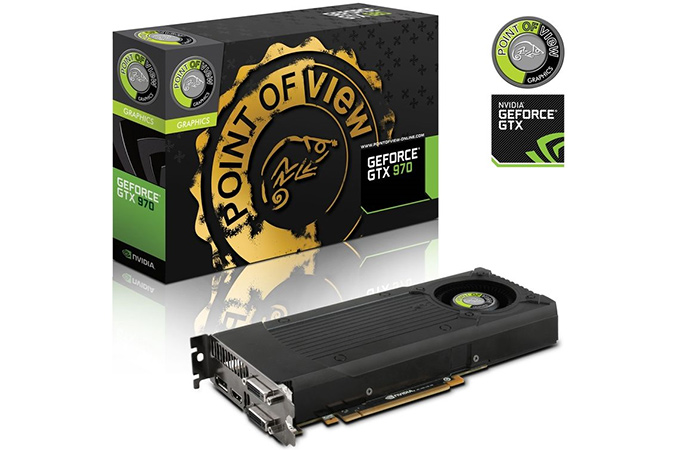

 Quote
Quote
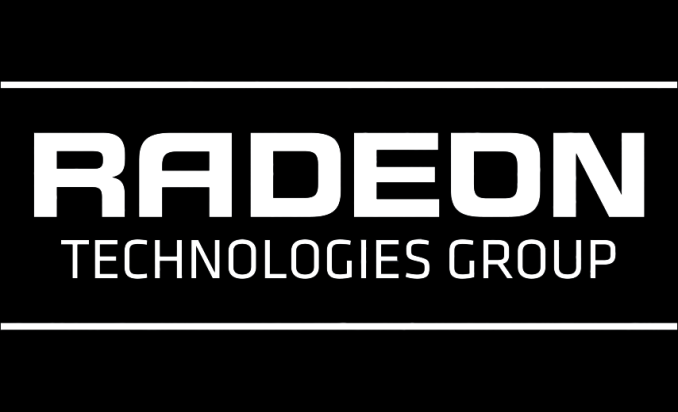
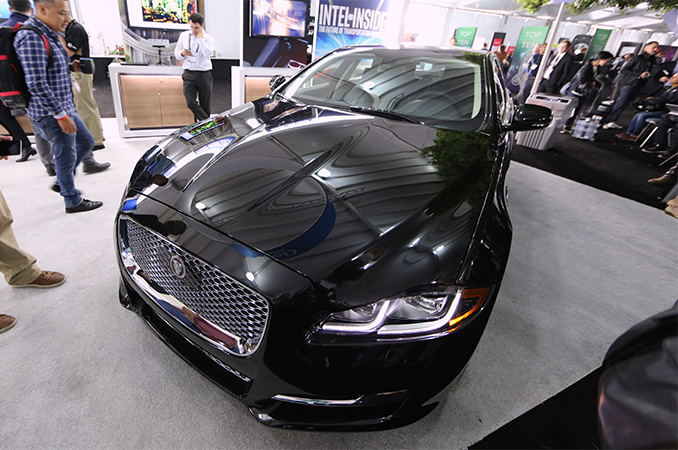
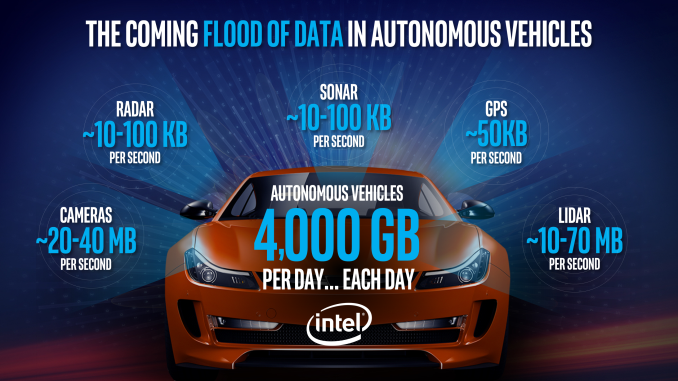





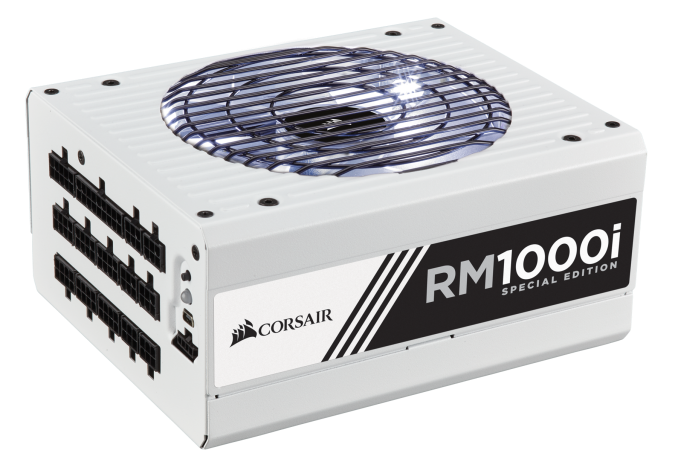


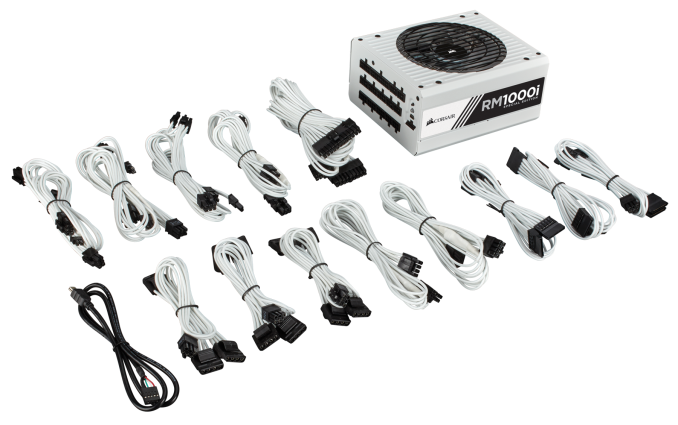








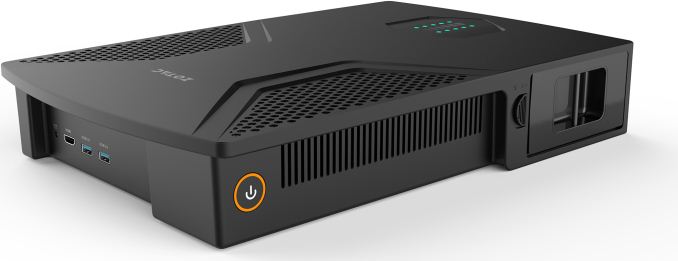
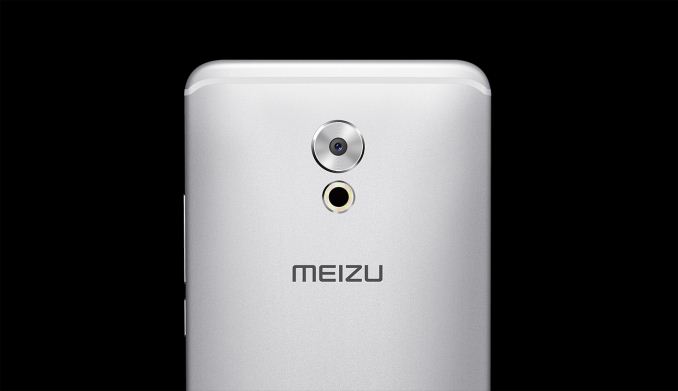
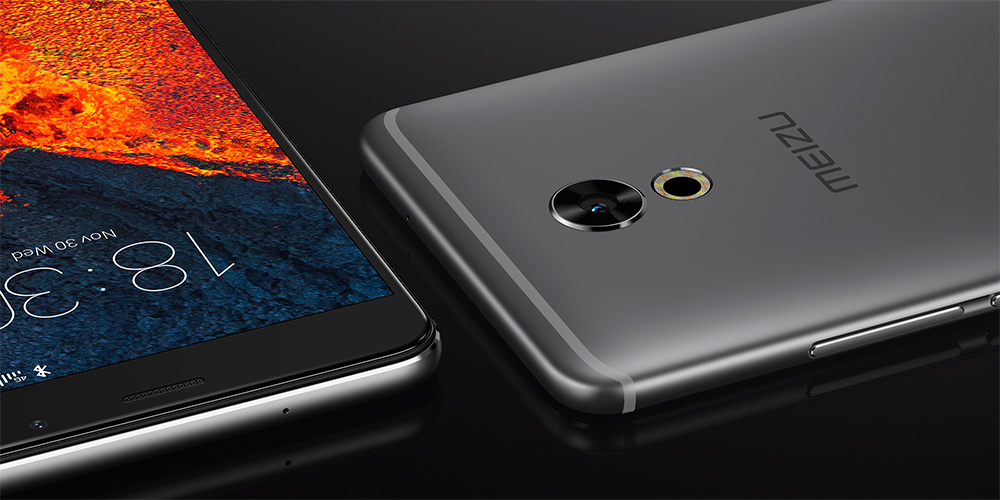
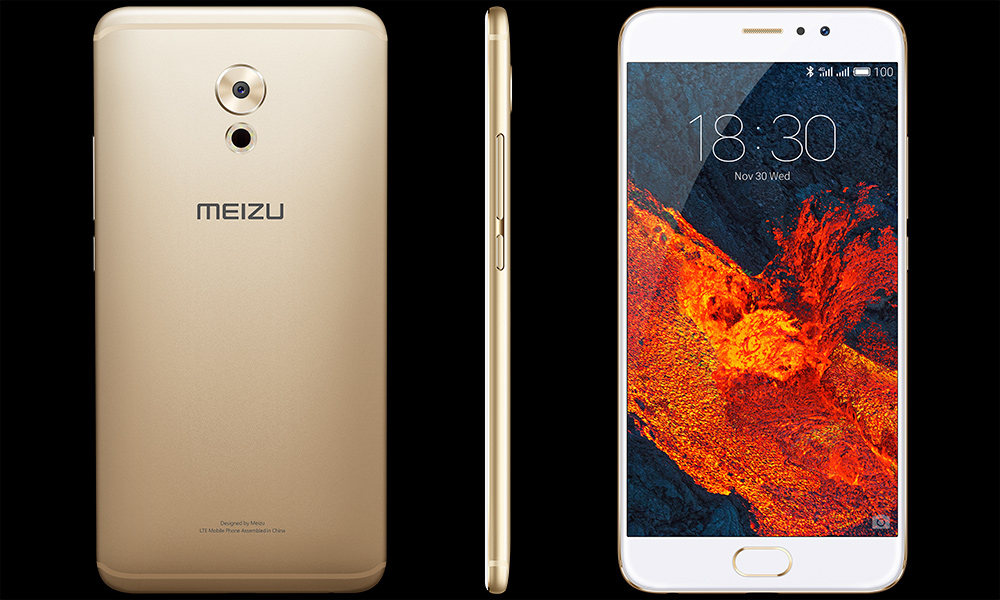


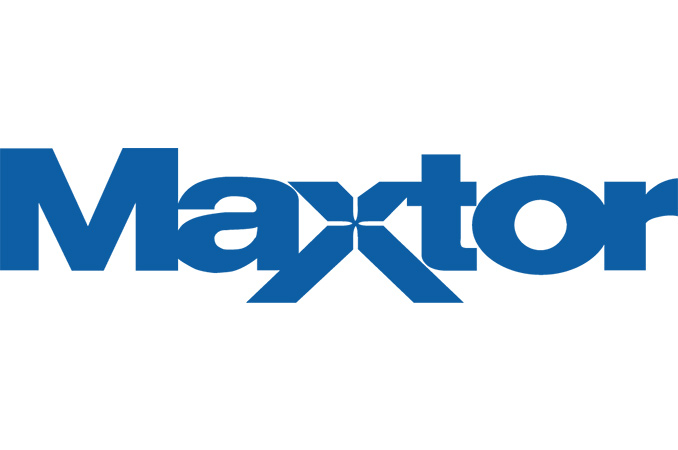
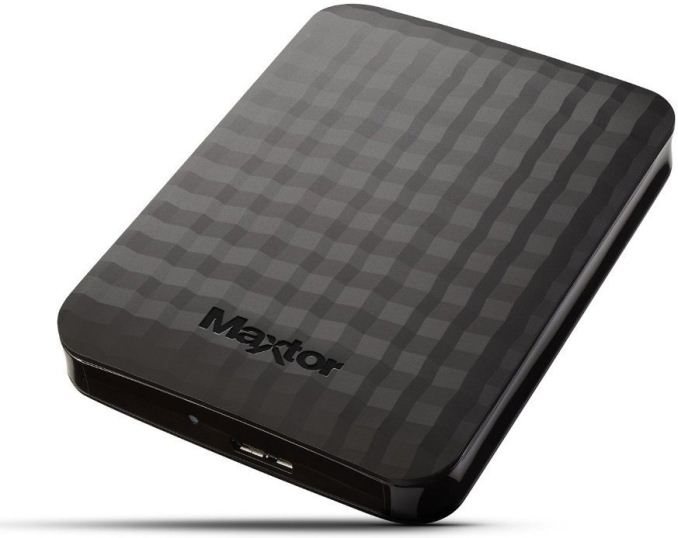
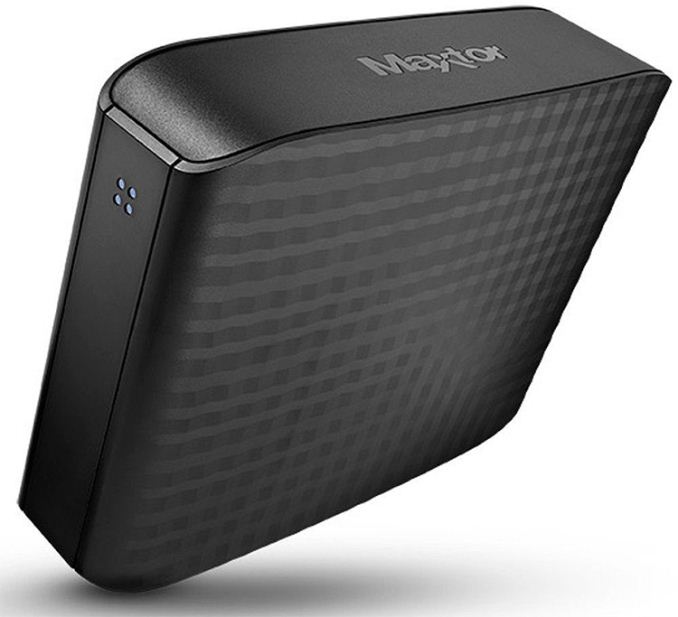
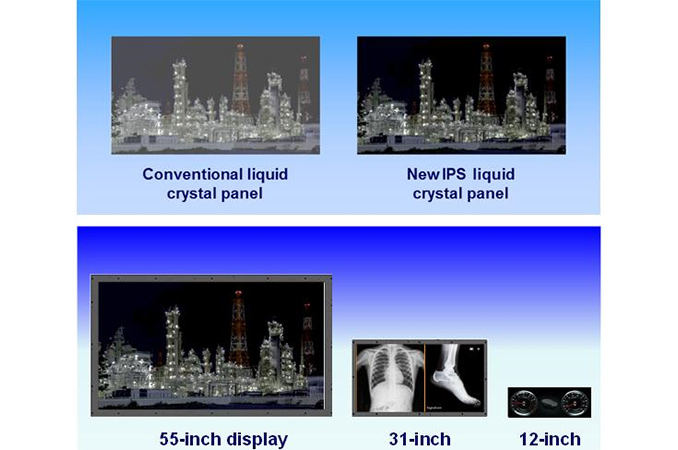

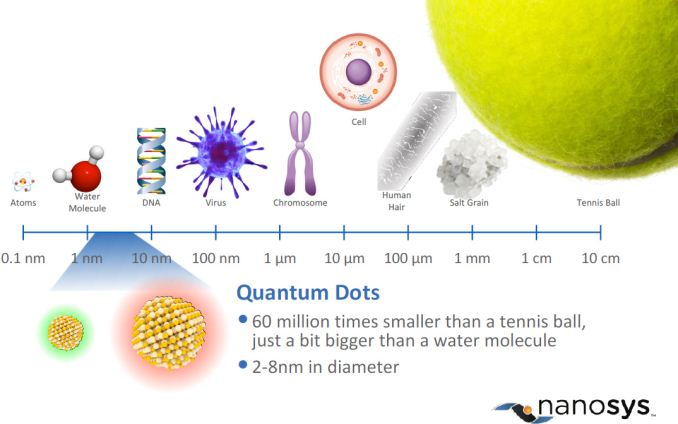
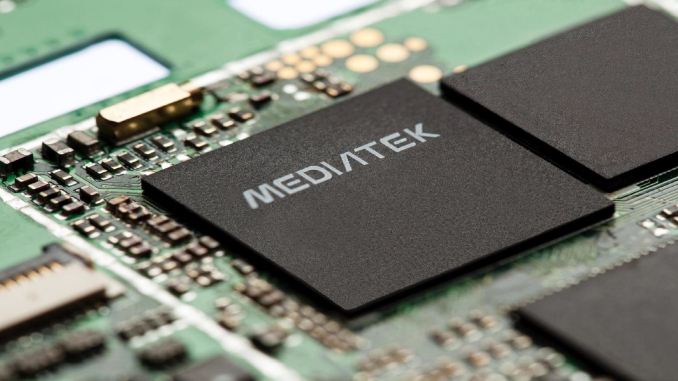
















Bookmarks